[Video: Serious Eats Team]
The doorbell rings. They’re here.
It’s an oh, sh*t moment for me. I’ve got a lasagna half assembled, a salad dressing half made, a dessert I thought I was going to prep before dinner, an appetizer spread I thought I was going to prep before that. But here they are, our friends, and they need drinks.
I take a deep breath, look around, and walk toward the front door, silently thanking myself for doing what I do these days: I batch cocktails in advance.
Batching cocktails—making them by the pitcher or the bottle—means that when you’re hosting, you don’t have to also be filling shakers and knocking over the bitters, rattling ice and accidentally squirting yourself in the eye with lemon juice. The drinks are made. Dinner will come later. Just pour and join your guests.
But how do you do it? With a little advance planning, a few easy-to-find supplies, and a recipe, whether it’s one of the many cocktail recipes on Serious Eats or one from my new book, Batch Cocktails: Make-Ahead Pitcher Drinks for Every Occasion.
What You Need: Essential Tools for Making Batch Cocktails
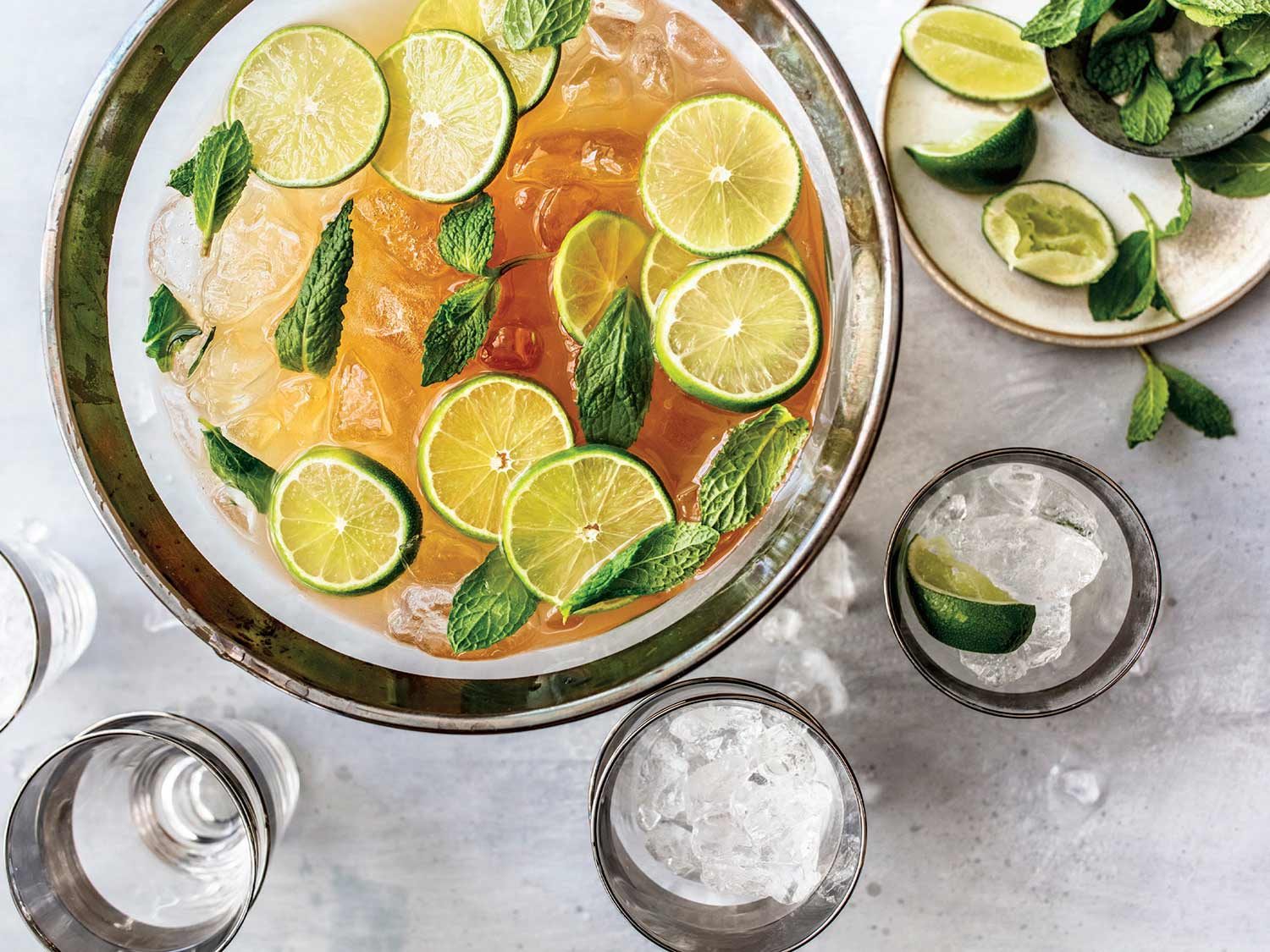
This punch bowl is nice, but you don’t need it to serve a big batch of cocktails. [Photography copyright: Kelly Puleio © 2019]
Here’s the good news: You don’t need a cocktail shaker.
And you probably don’t need to go out and buy a fancy new pitcher in order to serve a batch of cocktails. But you do need to make sure you’ve got some sort of pitcher or bowl or big Mason jar or water bottle or empty liquor bottle or very clean growler—or a combination of several of these—that’s big enough to hold your whole batch. If you’re making a two-quart drink and the pitcher your grandma gave you holds three or three and a half quarts, I wouldn’t worry too much—a little extra space in the pitcher isn’t the end of the world.
To measure your pitcher or punch bowl, use a glass or plastic measuring cup to count how many cups of water fit in it. This will also test the vessel for leaks, and it’s worth checking, especially if you picked up that pretty punch bowl at a vintage store or flea market.
A bowl doesn’t have to be an officially designated punch bowl to work, as long as it’s food-safe: Perhaps you have a glass or ceramic salad bowl that’s perfect! If your vessels are smaller than the size of your batch, mix all the ingredients in a large container first to make sure that they’re well blended before splitting the cocktail into the smaller storage/serving containers.
I like to make stiffer drinks—the kinds of cocktails that would usually be stirred—in a liter-size bottle or Mason jar. These seal well and can be chilled in the freezer. (In a pinch, though, you could use an empty seltzer bottle.) If you’re filling a narrow-necked vessel, you may want to have a funnel on hand to avoid spills.
You can, of course, make other sorts of cocktails in these vessels, too, with the added advantage that you can seal them up and give them a quick shake to get some frothy texture going.
For measuring, liquid cup measures in glass or plastic work well. You may also need a set of accurate measuring spoons or a miniature measuring cup.
Other than that, you may need well-sealing jars for storing any syrups, plus whatever gear you usually use for serving drinks, including enough glasses for everyone and plenty of ice trays.
If you’re using a bowl, you’ll need a ladle for serving as well. Nobody wants to go bobbing for cocktails.
Don’t Forget About Water!
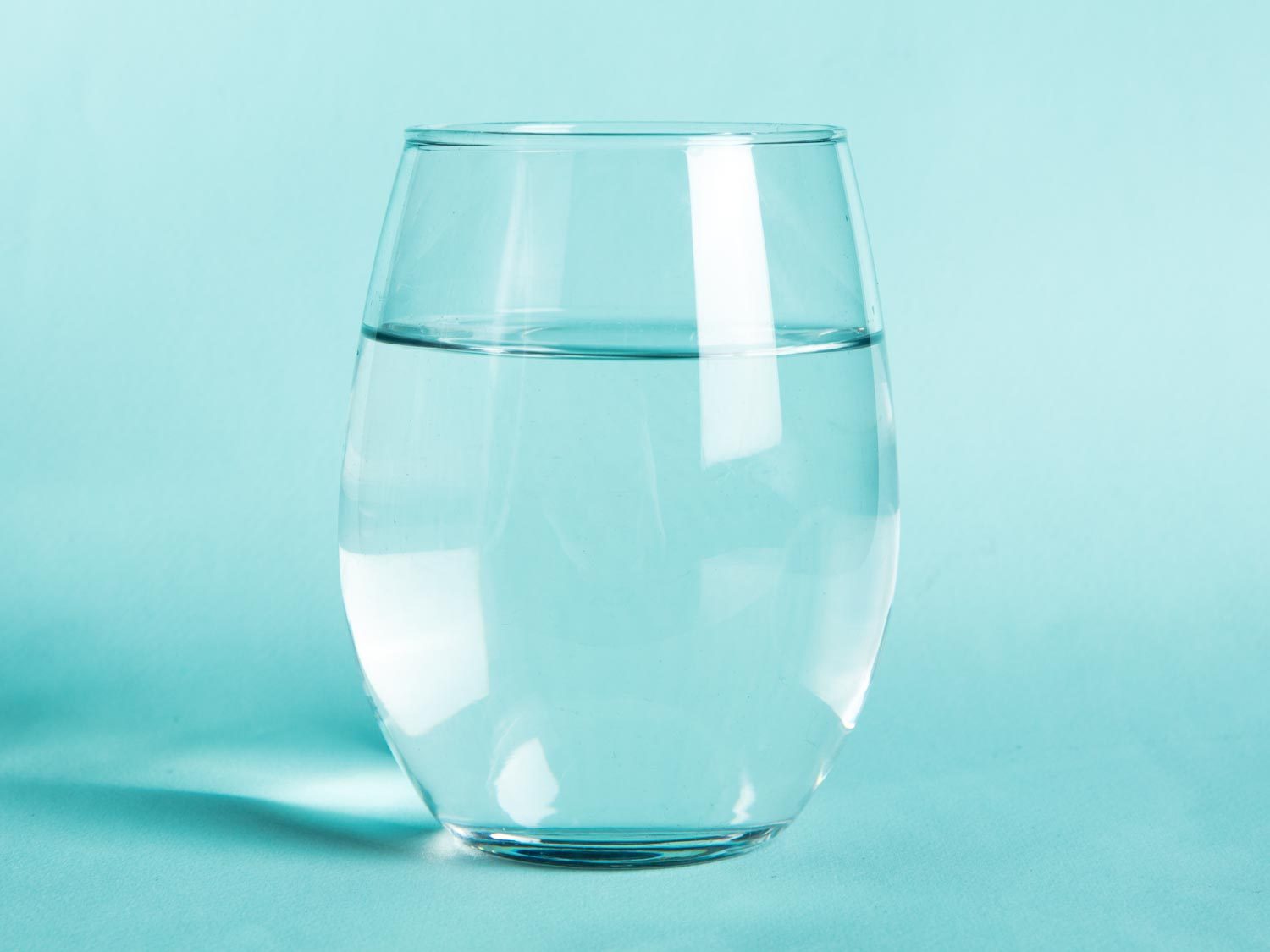
Though you may not always see it, water is an essential cocktail ingredient. [Photograph: Vicky Wasik]
I recently went to a party where my friends showed up with a pitcher of Last Words. They added gin, lime, Chartreuse, maraschino…all the ingredients—or so they thought. But the drink was eye-poppingly strong, screechingly tart, and sticky-sweet. They had missed something really important: the water.
Pretty much every cocktail you’ve ever had has water as an ingredient, often added by the bartender by shaking or stirring the drink with ice. This process chills the drink, which you can do just as well by sticking it in your fridge or freezer. But also, crucially, it adds water that lowers the drink’s proof and sweetness.
When you’re making batched cocktails, you can’t just multiply every element that’s in the ingredient list on a single-serving recipe. Even if you chill that mix, it won’t taste right. You’ve got to add water somehow, whether it’s by pouring it over ice that will melt, stirring it with ice that melts, or measuring the ideal amount of water (or, sometimes, soda or tea) and adding it to the initial pitcher.
In these batch-cocktail recipes, and in my book, the right amount of water is all calculated and tested for you. But if you want to batch up a recipe you’ve found elsewhere, you’ll need to do some math. I’ll walk you through it a little later in this article.
Can you use tap water? Well, that depends on how your local water tastes. Some bartenders insist on using bottled water or filtered water for batched cocktails; if you like the taste and aroma of the water out of your tap, I say go ahead and use it.
What Can I Do the Night Before?
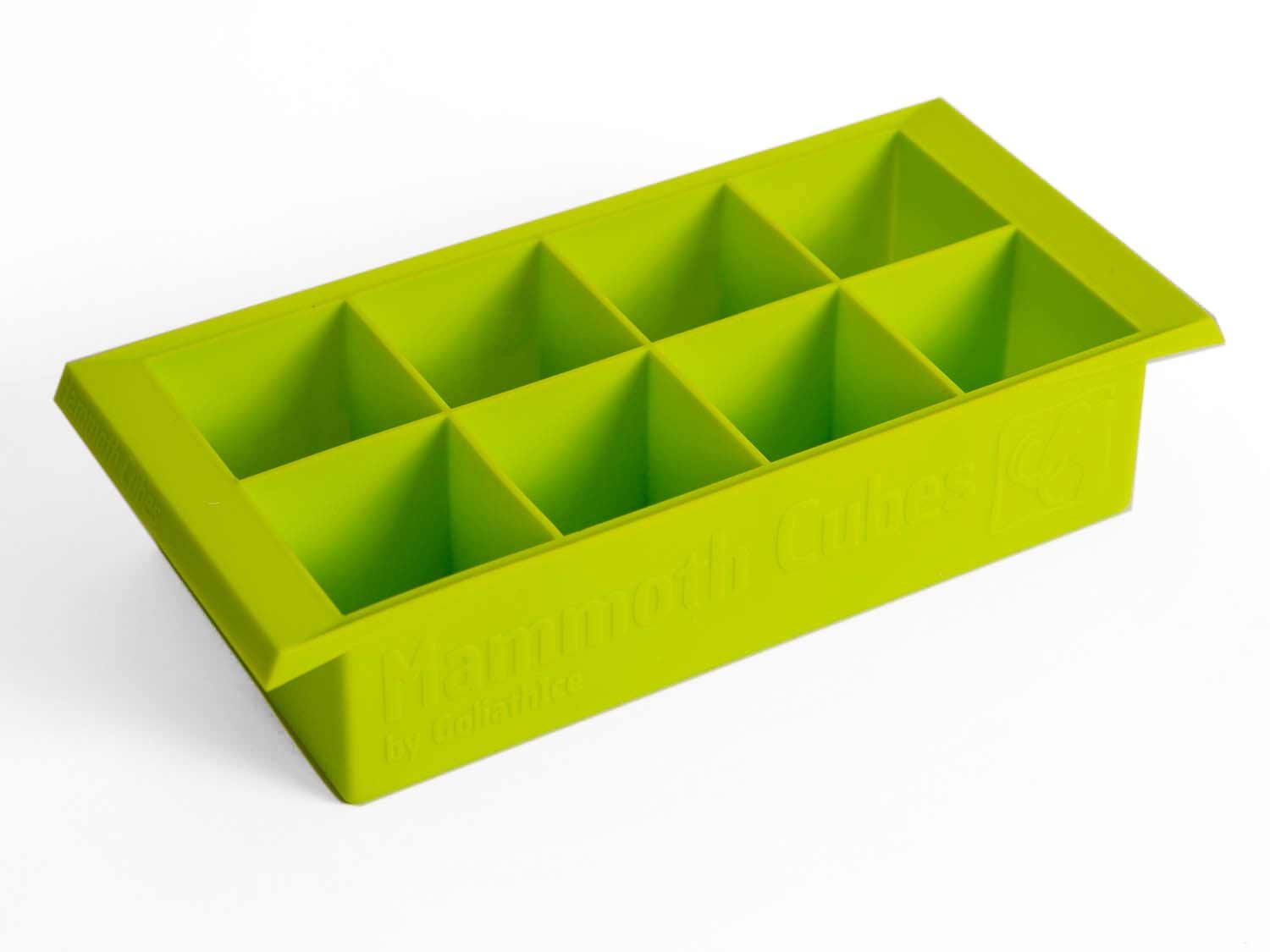
First, make ice. Make a lot of ice. Stored in zipper-lock bags, it can keep for a few weeks—don’t use ancient ice that has absorbed the smells of your freezer over more than a month. If you don’t have extra freezer space, task a few friends with bringing bags of ice to add to whatever you can make. You can always throw a few bags in your (clean!) bathtub—it’ll mostly stay frozen if it’s sitting next to other ice.
You can begin to batch your drinks in advance as well, combining all shelf-stable ingredients in a well-sealed container in your fridge. Even if you’re not ready to start measuring and mixing, it’s still a good idea to chill all of your cocktail ingredients (the vermouth, the spirits, the syrups) the night before. Cooler ingredients will stay cool longer, and they’ll keep any ice in your glasses from melting too fast.
Spirits, like gin, vodka, tequila, and whiskey, can even go in your freezer if you have space. (Just don’t put them in the door—those door shelves aren’t always strong enough to hold a heavy bottle.) Don’t put bottles of vermouth or liqueur in the freezer overnight, since they’re low-alcohol enough to freeze solid.
If you’re batching a drink to serve within a week or so, you can add water and bitters to your cocktail along with the spirits, liqueurs, and syrups. But if you’re considering a long-aging experiment, I have more tips for you below.
What Can’t I Do the Night Before?
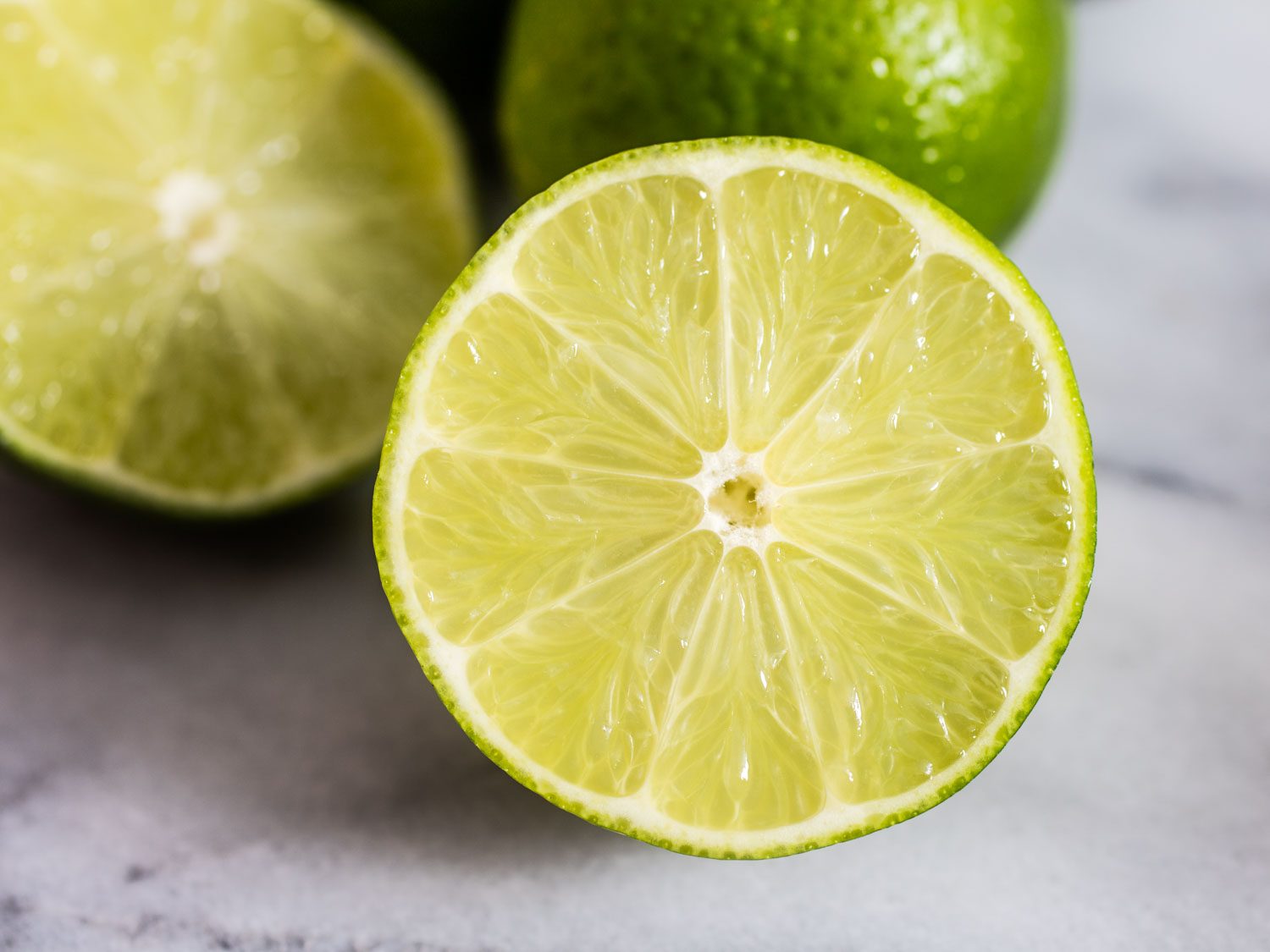
Hold off on juicing your citrus until shortly before your gathering—its flavor won’t hold up well over time. [Photograph: Vicky Wasik]
Unfortunately, it’s really best to wait to squeeze citrus juice (or any other fresh juices) until the day you plan to serve them. There’s no point in putting in the effort to make fresh juices if you’re going to let them oxidize and start tasting off. I like to prep juices an hour or two ahead of a gathering—and add them to the refrigerated cocktail batch to keep cool—so that I can be certain they’ll taste really good throughout the party.
While most non-juice ingredients can be combined in advance—your spirits, your liqueurs, your vermouth, your Sauvignon Blanc—you’ll also want to hold off on adding any fizzy ingredients, like sparkling wine, beer, or soda, until just before serving, in order to preserve those bubbles.
Measure With Care
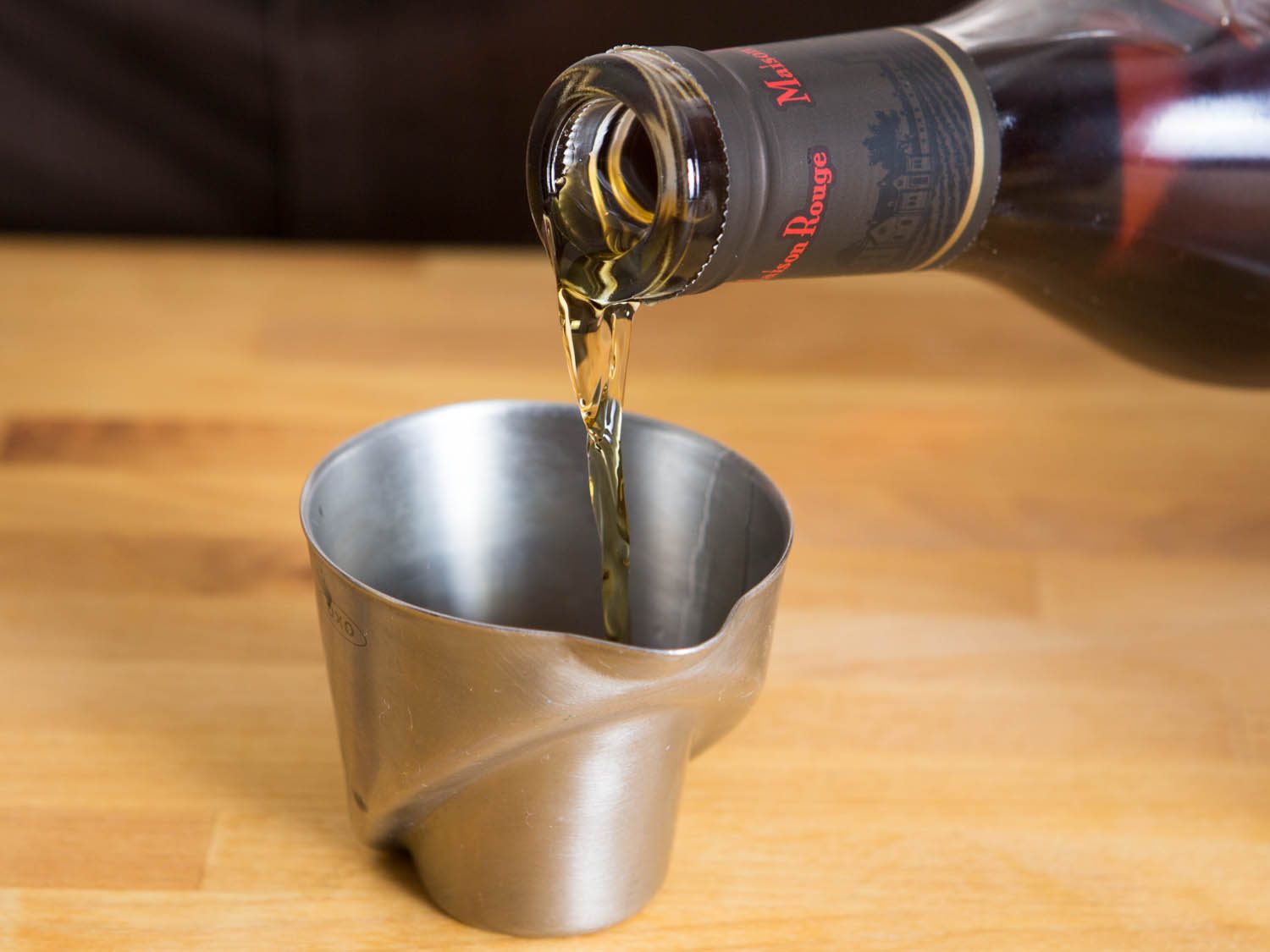
[Photograph: Vicky Wasik]
If you need a reminder of why taking shortcuts isn’t a good idea, just think about how expensive a single cocktail in a bar can be, then multiply that by the number of servings you’re making. Mess up with sloppy measuring, and you could be pouring a lot of money down the drain.
One of the easiest mistakes to make is measuring your liquids while holding the measuring cup directly over the vessel. If you accidentally spill, you could end up completely changing the way your cocktail tastes, and not always for the better. You may see bartenders do it with a jigger when they’re working quickly, but it’s better to use more care at home, especially when you’re mixing a large-format cocktail.
Label Everything!
If you’ve made a syrup or started to combine ingredients for a batched cocktail, be sure to label whatever container you’ve put the mix in. Note whether that jar contains a 1:1 or 2:1 simple syrup, and indicate which liquors you’ve premixed in a bottle. A message on a piece of tape that says “Simple syrup already in here” is worth its weight in gold.
Extra Credit: Bottle-Aged Cocktails
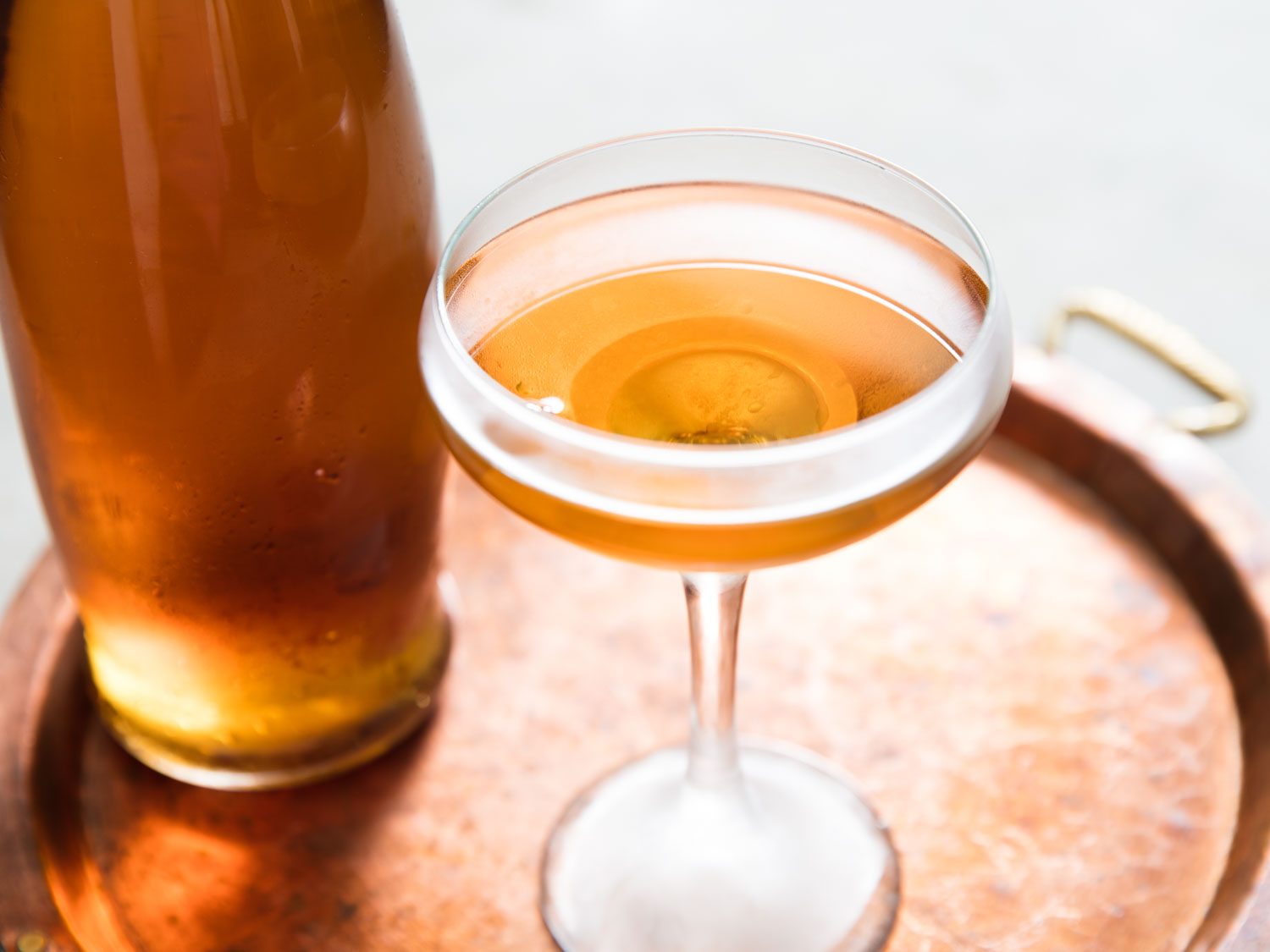
[Photograph: Vicky Wasik]
Most of the time, we’re prepping cocktails for serving at a barbecue tomorrow or a dinner party Sunday night. But some cocktails can be mixed in advance and aged for months, or even years.
This nerdy experiment is only for those who have a little extra fridge space, but it’s fun to see how a good cocktail can evolve over time. Even a few days in, you may notice how a drink’s flavors seem to integrate and meld, and, as weeks and months pass, you may be surprised at the evolution in a drink’s texture and flavor. Here are a few tips for getting started:
- Choose a stirred-style drink—one without fresh citrus, since fruit juices won’t age well.
- Leave out the water and bitters if you plan to store the drink for more than a week or two. Add these the day you’d like to serve the drinks, or stir individual drinks with ice if you want to keep aging the batch.
- Store cocktails you’re aging in a clean container in the fridge.
- Minimize oxygen exposure. If you’d like to sample your drink along the way, consider splitting the batch up into smaller containers with less headspace. (Mason jars of various sizes work well.)
How to Convert a Single-Drink Recipe to a Batch
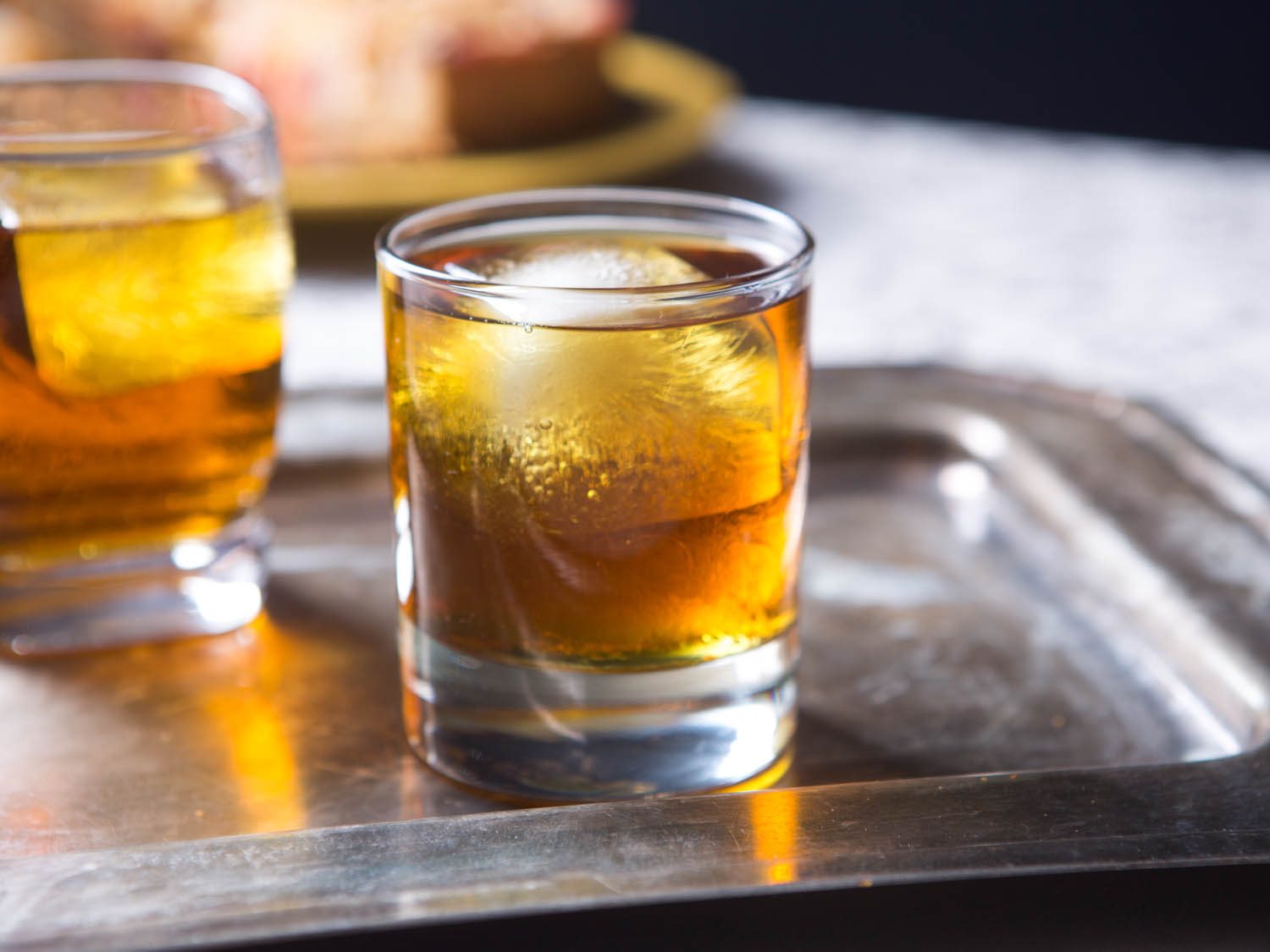
[Photograph: Vicky Wasik]
Figuring out your ideal batched version of a cocktail recipe takes some trial and error. Luckily, the trials include cocktail-tasting, so it’s not too rough a journey.
If you’re not one for math, I recommend starting with the recipes in my book, which I’ve already tested for you. No matter your recipe, all the best practices detailed in the sections above apply—don’t make fresh juices too far in advance, and be careful in your measurements!
Making a big version of a single cocktail starts with simple multiplication. For most recipes, this means you’ll simply scale up the drink you like depending on how many servings you want to make. If your cocktail calls for two ounces of whiskey, and you want to make eight of them, you’ll need 16 ounces (i.e., two cups) of whiskey.
But, as we’ve already noted, that doesn’t include the water you’ll need in the drink for proper dilution—the water that typically comes from ice when an individual drink is stirred or shaken. You have to figure out how much water you want in each drink serving and multiply that by the number of servings, just as you did for all the other ingredients in the original recipe.
One method—let’s call it the “physical” one—is to quickly mix up a single serving of the drink in question to figure out how much water you need in it. To do that, start by combining all the non-water ingredients of a single serving of the drink you want to make, taking note of its total volume. For example, you might make a Manhattan with two ounces of rye and one ounce of sweet vermouth, so you’re starting with three ounces total.
Next, stir (or shake, if it’s that kind of drink) with ice until it’s well chilled and properly diluted. You can taste it with a small cocktail straw to make sure.
Now strain out the ice and measure the cocktail a second time. You should see a higher volume than you started with, which will be from water that the ice melted into the drink.
The difference between the original three-ounce measurement and this second one will be your ideal volume of water per serving. It’s probably somewhere between half an ounce and three-quarters of an ounce of water per drink for a stirred cocktail that’s meant to be served up (without ice), and a little less—probably a quarter to a half ounce—for a drink that’s going to have ice in the pitcher or the glass, since that ice will melt and further dilute the drink. If you’re using particularly high-proof whiskey, you might like your drink best using the higher end of the range.
Another method—the more mathematical one—is to start with some calculations. Your three-ounce stirred drink, a drink you’re planning to serve up, without ice, in a coupe or martini glass, probably needs water that measures between 17 and 25% of the total pre-dilution volume; that is, around one-half to three-quarters of an ounce of water for a typical three-ounce drink. If you’re making a cocktail that’s going to be served with ice in the pitcher or the glass, you’ll probably want to start with slightly lower dilution, since the ice will melt and dilute over time—say, 10 to 15% of the total pre-dilution volume, or about one-quarter to one-half ounce water added to each three-ounce drink.
To be sure the percentage you’ve calculated really works for you, it’s a good idea to test it out before mixing a massive batch. In a Mason jar, prepare a single sample with the water you’ve calculated, chill it in your freezer for an hour or two, then serve as required (up or on the rocks). Give the drink a taste, and decide whether you like it or whether you want to adjust your water percentage slightly in one direction or another to make the drink stronger or weaker.
Keep in mind that for drinks served over ice, you may be better off starting slightly in the too-strong direction, since they will dilute more in the glass. Drinks that are served up, on the other hand, should taste perfect from the first sip.
Once you’ve figured out your ideal dilution for one drink, you’re ready to multiply and finalize your batch recipe. And then comes the best part: answering the door, welcoming your friends, and raising a glass.
This post may contain links to Amazon or other partners; your purchases via these links can benefit Serious Eats. Read more about our affiliate linking policy.
Source link